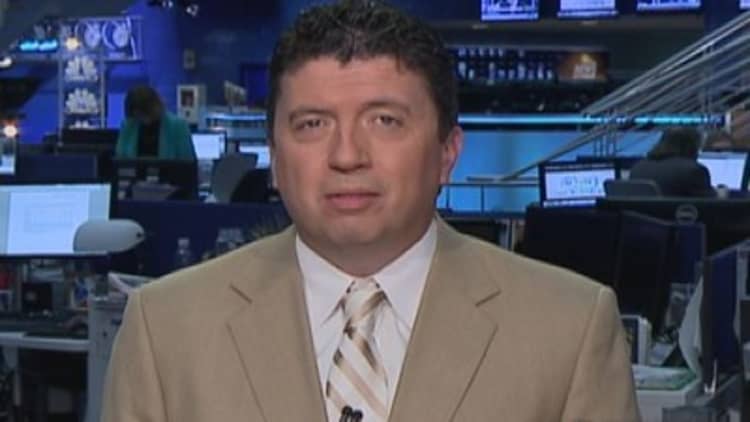
At the core of the Federal Reserve's credibility is its insistence that it can hold interest rates low enough for long enough to ensure a complete economic recovery.
The reality may prove quite a bit different, particularly if current trends hold up.
Those low yields are critical for both the public and private sector—financing upwards of a trillion dollars a year in corporate borrowing as well as helping to contain financing costs for the government's $17.5 trillion debt.
But after nearly five months of a decline in yields that caught market participants almost completely off guard, talk is increasing that inflationary pressures are building and that yields may begin to rise in a way that could put the Fed behind the curve of market forces.
Read MoreFed discussed rate hike procedures, no action soon
That could help undermine the position of a central bank that badly needs the market's confidence if it is to have any chance to unwind a nearly $4.4 trillion balance sheet and a historically lengthy time period of basement-level interest rates.
"It's not that I don't have faith in the Fed or think these are not some of the smartest economists out there. This is unprecedented territory," said Lindsey M. Piegza, chief economist at Sterne Agee. "It's going to be very difficult to understand those unintended consequences on the back end of these policies. ...That confusion of how to unwind these unprecedented policies says to me there's going to be a lot of volatility, a lot of missteps."
Others in the market share the sentiment that while the Fed may not be driving blind, it doesn't have a particularly clear road map, either. One worry is that a combined heat-up in the economy will combine with inflation to force the Fed to raise rates before it would like.
Goldman Sachs in particular released a paper Thursday suggesting that the "neutral" rate often discussed by Fed officials—or the Fed funds rate that would be appropriate to ensure normal economic growth—is wrong. Central bank governors expect this rate to remain low for some time, reasoning that the economy continues to heal slowly from the financial crisis of 2008 and 2009.
Goldman economists, though, contend that the Fed is actually too pessimistic about growth prospects.
Read More4 reasons US is recovering, leaving the rest behind
"Our results suggest that the neutral rate might well normalize relatively quickly as the headwinds fade and the economic recovery begins to firm," Sven Jari Stehn wrote in a report for clients. "The latter would appear at odds with the FOMC's view that the neutral funds rate will remain depressed for years to come despite a healthy economic recovery."
The view is an interesting one in that the Fed for years has badly miscalculated economic growth—but on the optimistic side. It projected as recently as 2011, for instance, that gross domestic product growth in 2013 would be in the 3.7 percent o 4.6 percent range, when the actual print was 1.9 percent. Similar trends have continued throughout the recovery from the recession that ended in 2009.
The Fed's most recent projections are for GDP to grow in the 3 percent range for the next few years, yet it sees a need to keep its funds rate around zero.
Despite the Fed's hopes of continued low rates, the reality could see market structure get away from the Fed's actions.

Read MoreFischer, Brainard to push for a more activist Fed
Jim Paulsen, chief market strategist at Wells Capital Management, said he envisions the 10-year Treasury yield in the 3.5 percent range or higher before year's end, which would be a full percentage point and maybe then some above current levels.
"I'm already seeing some evidence where good news could become bad news," Paulsen said in a CNBC interview. "If wage inflation goes up just a little bit, all of the sudden we could have a little panic about inflation. That could feed into bond yields."
Indeed, there's plenty to watch on the inflation front.
The April consumer price index rise to 2 percent gets it closer to the Fed's target of 2.5 percent, while there also have been noticeable spikes in producer prices, rents and auto prices.
Read MoreProducer prices spike in April, hint at inflation
"Some of the survey evidence has indicated that price rises are becoming more prevalent." Capital Economics said in a note to clients, referring to studies by the National Federation of Independent Business and others. "The increase in the selling prices balance of the NFIB small firms survey, for example, suggests that core (personal consumption expenditure) inflation will climb to 2 percent within six months. That would be a quicker rebound than either the Fed or the markets are expecting."
Market participants are getting nervous about where that would leave the Fed, evidenced by some of the churns this week.
"We have to be ready for some bumps and volatility," said Piegza. "The Fed's going to do the best job it can, but it's unlikely that it's going to be the perfect, smooth transition."






